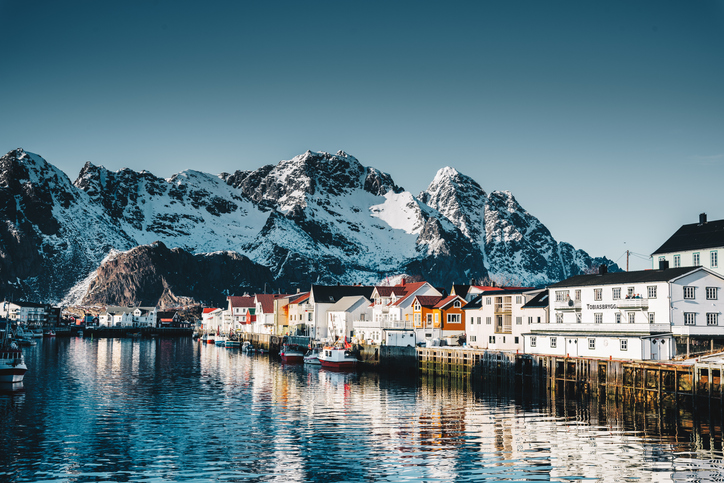Using Strontium Isotope Ratios to Study the Late Bronze Age
2 8月 2021

Strontium is a trace element, with four naturally occurring isotopes (84Sr, 86Sr, 87Sr, 88Sr) out of which three are stable and one (87Sr) is radiogenic, produced by the decay of 87Rb.
The 87Sr/86Sr ratio varies depending on age and the Rb/Sr concentration of the rocks, which is very dependent on rock type. Strontium is released from bedrock, soil and atmospheric deposits through weathering processes and enters the food chain of humans and animals through drinking water and plant-based food. Mobile strontium taken up by plants from the soil through their root systems is strongly dependent on geographical area and the 87Sr/86Sr ratios link a strontium isotope signature of plant-based food to a specific geographic location and soil.
Strontium in surface waters (rivers, creeks, lakes, ponds) and spring waters, which make up the drinking water sources used by humans and animals, also reflects a locally dependent value of strontium from the catchments of rivers and aquifers. The strontium isotope signatures of these waters are, therefore, also tied to the geological background of a specific geographic area.
Scania covers the south-eastern part of the Scandinavian Peninsula. Its strategic geographical position dominating the access to the Baltic Sea has played a crucial role in the history of the region from the earliest colonization at the end of the last glacial period until modern times. Archaeological remains that extend from the Late Palaeolithic, through the Stone, Bronze and Iron Ages until the Middle Ages allow reconstructing of a dynamic picture of the local prehistory and early history. Several studies to investigate mobility of both prehistoric and medieval humans and animals from this region, provide a wide overview on the mobility of individuals and animals over this long time period1.
Recent work by Ladegaard-Pedersen and colleagues2 presents the results of strontium isotope analyses carried out on six individuals and two faunal remains from the Late Bronze Age cemetery of Simris II in south-eastern Scania, which was primarily in use during the Nordic Period V (c. 900–700 BCE). When investigating mobility within Scania, the site of Simris II is of special interest due to archaeological finds of burial urns with a particular shape that suggest links with long-distance networks. They also analysed a wide range of environmental samples to establish location-specific strontium isotope baselines in order to assess the origins of the originators of the Simris II samples.
Samples of natural waters, soil leachates, plants and drillings from skeletal bones were prepared, dissolved and after concentration on a micro-column were extracted with ultrapure water (ELGA PURELAB flex) and finally dissolved in 2.5 μL of a Ta2O5-H3PO4-HF activator solution before loading directly on previously out-gassed 99.98% single Re filaments. Samples were measured at 1250–1300°C in dynamic multi-collection mode on a Thermal Ionisation Mass Spectrometer (TIMS; VG Sector 54 IT mass spectrometer equipped with eight Faraday detectors). They contained typically 10s of nanograms of strontium, blanks were at undetectable levels.
Sample | Sample Type | 87Sr/86Sr ratio | Error (2SE) | Origin of Sample |
Grave 60 | Petrous bone L | 0.71182 | 0.00001 | Adult male |
Grave 66 | Petrous bone R | 0.71177 | 0.00001 | Adult female |
Grave 71 | Cremated tooth enamel | 0.71177 | 0.00001 | c. 15 years |
Grave 80 | Petrous bone L | 0.71191 | 0.00002 | Adult female |
Grave 93 | Petrous bone L | 0.71505 | 0.00001 | Adult male |
Grave 102 | Petrous bone L | 0.71223 | 0.00001 | c 10-15 years |
Faunal Grave 79B | Petrous bone 2 | 0.71179 | 0.00001 |
|
Faunal Grave 79B | Petrous bone 4 | 0.71225 | 0.00001 |
|
Unexpectedly, all but one of the samples showed very similar 87Sr/86Sr ratios similar to the water, soil and plant samples in an area near the cemetery. This suggests that there was less mobility of people from outside the area than expected. This data can be correlated with other evidence on site.
Why Choose ELGA LabWater?
The use of ultrapure water for the sample preparation in this study illustrates its advantages even for isotope ratio measurements of strontium - a relatively uncommon element. The differences detected are small and can only be discussed with confidence if the blanks are undetectably low and the risks of contamination are extremely small. In this case the effect is to achieve results with confidence to 5 significant figures. This can only be done using a source of ultrapure water with a proven track record of purity and reliability such as the PURELAB flex.
Reference
- Price TD. Human mobility at Uppåkra: a preliminary report on isotopic proveniencing. Studies at Uppåkra, An Iron Age City in Scania, Sweden Lund: Institute of Archaeology. 2013:157–69.
- Ladegaard-Pedersen P, Sabatini S, Frei R, Kristiansen K, Frei KM (2021) Testing Late Bronze Age mobility in southern Sweden in the light of a new multi-proxy strontium isotope baseline of Scania. PLOS ONE 16(4): e0250279. https://doi.org/10.1371/journal.pone.0250279
Dr Paul Whitehead
After a BA in Chemistry at Oxford University, Paul focused his career on industrial applications of chemistry. He was awarded a PhD at Imperial College, London for developing a microwave-induced-plasma detector for gas chromatography. He spent the first half of his career managing the analytical support team at the Johnson Matthey Research/Technology Centre,specialising in the determination of precious metals and characterising applications such as car-exhaust catalysts and fuel cells. Subsequently, as Laboratory Manager in R&D for ELGA LabWater, he has been involved in introducing and developing the latest water purification technologies. He now acts as a consultant for ELGA.
